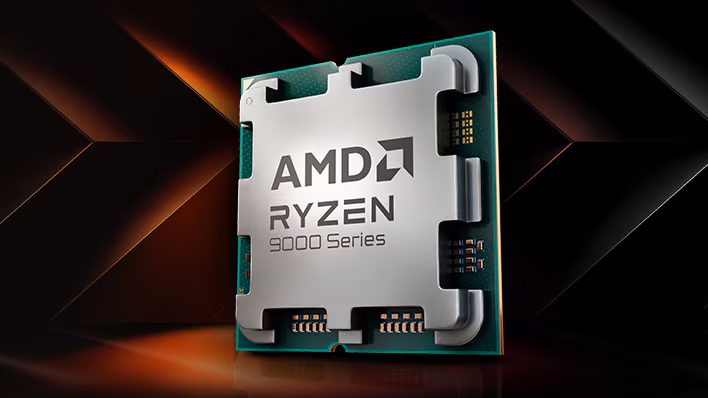AMD Ryzen 7 9700X overclocked to 5.8 GHz with AIO liquid cooler — 6 GHz also achievable but only on idle thus far
Overclockers have already figured out how to hit 6 GHz on Zen 5

Overclockers have no time to get familiar with AMD's Zen 5 CPU architecture and the new Ryzen 7 9700X, which rivals the best CPUs. Professional overclocker Skatterbencher has already figured out how to push the 9700X to 5.8 GHz in single-core workloads. Skatterbencher published a highly in-depth overclocking tutorial showcasing the feat. But he's not done yet. The overclocker also revealed that he successfully hit 6 GHz on the 9700X with traditional AIO liquid cooling.
To achieve this high frequency, SkatterBencher used all of AMD's overclocking-friendly tools, including EXPO, Precision Boost Overdrive 2, Curve Optimizer, the all-new Curve Shaper, and external clock generators virtually.
The tutorial reveals that the biggest hurdle to overcome was the Ryzen 7 9700X's Fmax (frequency max) limit of 5,550 MHz (5.55 GHz) to achieve 5.8 GHz. Fmax is an artificial limitation in Ryzen CPUs that prevents the CPU from reaching higher frequencies, even if it has headroom. To achieve 5.8 GHz, SkatterBencher had to use PBO2 to raise the Fmax ceiling by 200 MHz from 5.55 GHz to 5.75 GHz — 200 MHz is the maximum offset you can apply with PBO2.
SkatterBencher used an external clock generator to trick the 9700X into running at a higher frequency to get the rest of the way. An external clock of 104.3 MHz allowed him to unlock the 5.8 GHz frequency range.
To get the core(s) to boost up to that frequency, SkatterBencher used a combination of AMD's Curve Optimizer and Curve Shaper to undervolt the CPU and enable PBO2, which increases the amount of power the CPU can consume. Undervolting on Ryzen CPUs gives them more headroom, allowing them to hit higher frequencies without running into other limitations such as voltage, power, or thermal limits.
SkatterBencher also revealed that the Ryzen 9000 is heavily voltage-limited, featuring a peak VID limit of 1.4V for single core and 1.35V for multi-core. To help alleviate this problem, the overclocker utilized a PBO2 scalar preset 10X to boost the multi-core maximum voltage to 1.375V, enabling the chip to use more voltage to turbo higher than it previously would.
With all these technologies working in tandem, the overclocker achieved an idle frequency of 5.86 GHz. In stress testing, the maximum single-thread clock speed was 5.758 GHz, with a maximum multi-core frequency of 5.454 GHz operating at 95.2 degrees Celsius at a package power of 172.1 watts.
Get Tom's Hardware's best news and in-depth reviews, straight to your inbox.
SkatterBencher's 5.8 GHz and 6 GHz overclocks represent the highest on the new 9700X. Der8auer and Overclocking.com showcased their respective overclocks on the 9700X but could only eke out 5.4G Hz. The main difference was that both outlets did manual overclocks, whereas SkatterBencher used AMD's plethora of overclocking tools, enabling them to hit higher frequencies.

Aaron Klotz is a contributing writer for Tom’s Hardware, covering news related to computer hardware such as CPUs, and graphics cards.
-
jp7189 I'm surprise at the low clocks, and the heavy lock downs. I'm also shocked at the high temps at relatively low power.Reply
I had high hopes for 9950x headroom, but this lowers them a bit. -
NinoPino I suppose the limits are due to the PBO overclock system. If he had used a manual overclock probably would not have encountered such limitations.Reply
TSMC process seems not to be very overclock friendly, it will be interesting to see how will perform in overclock the next Intel's that also use TSMC.
